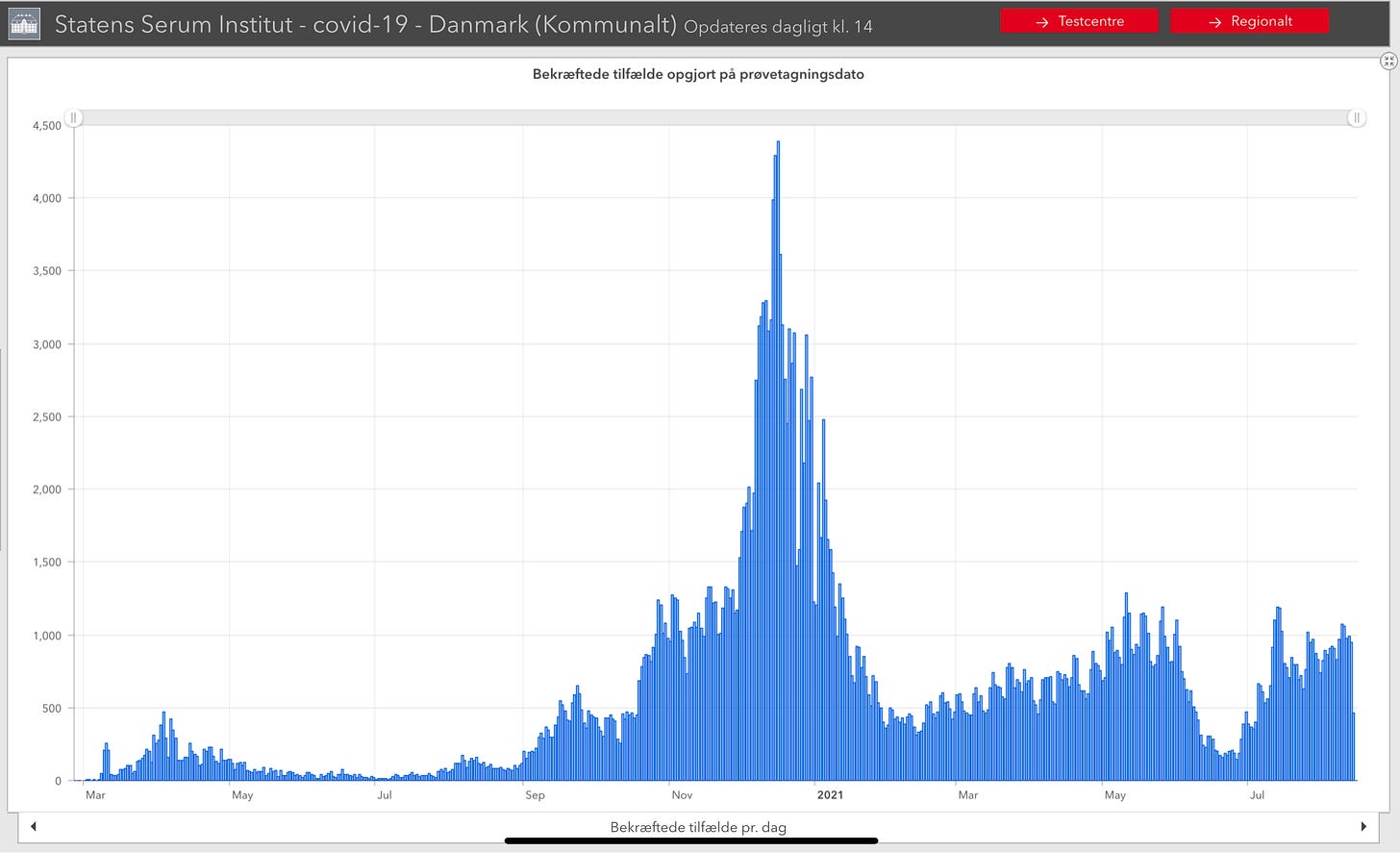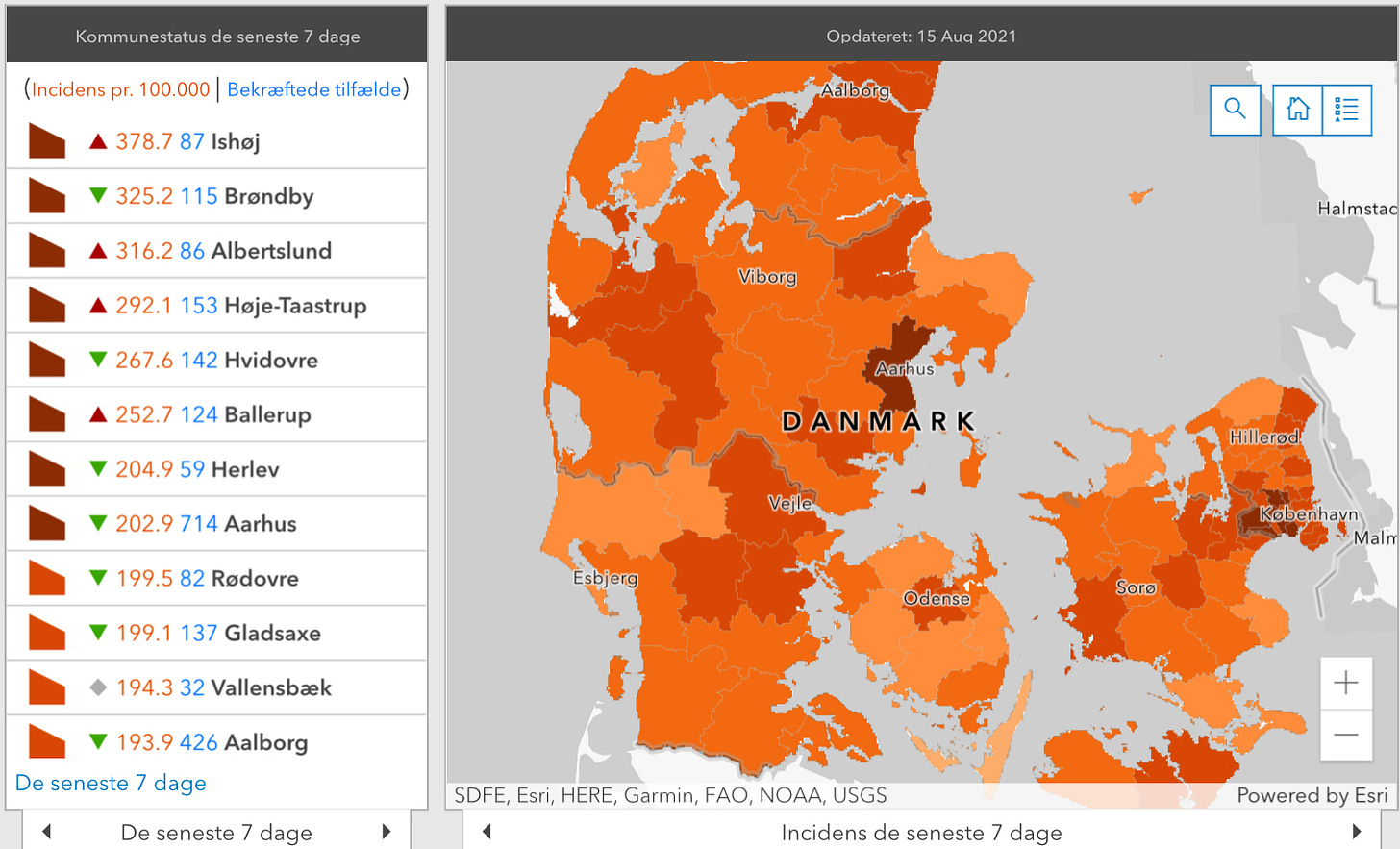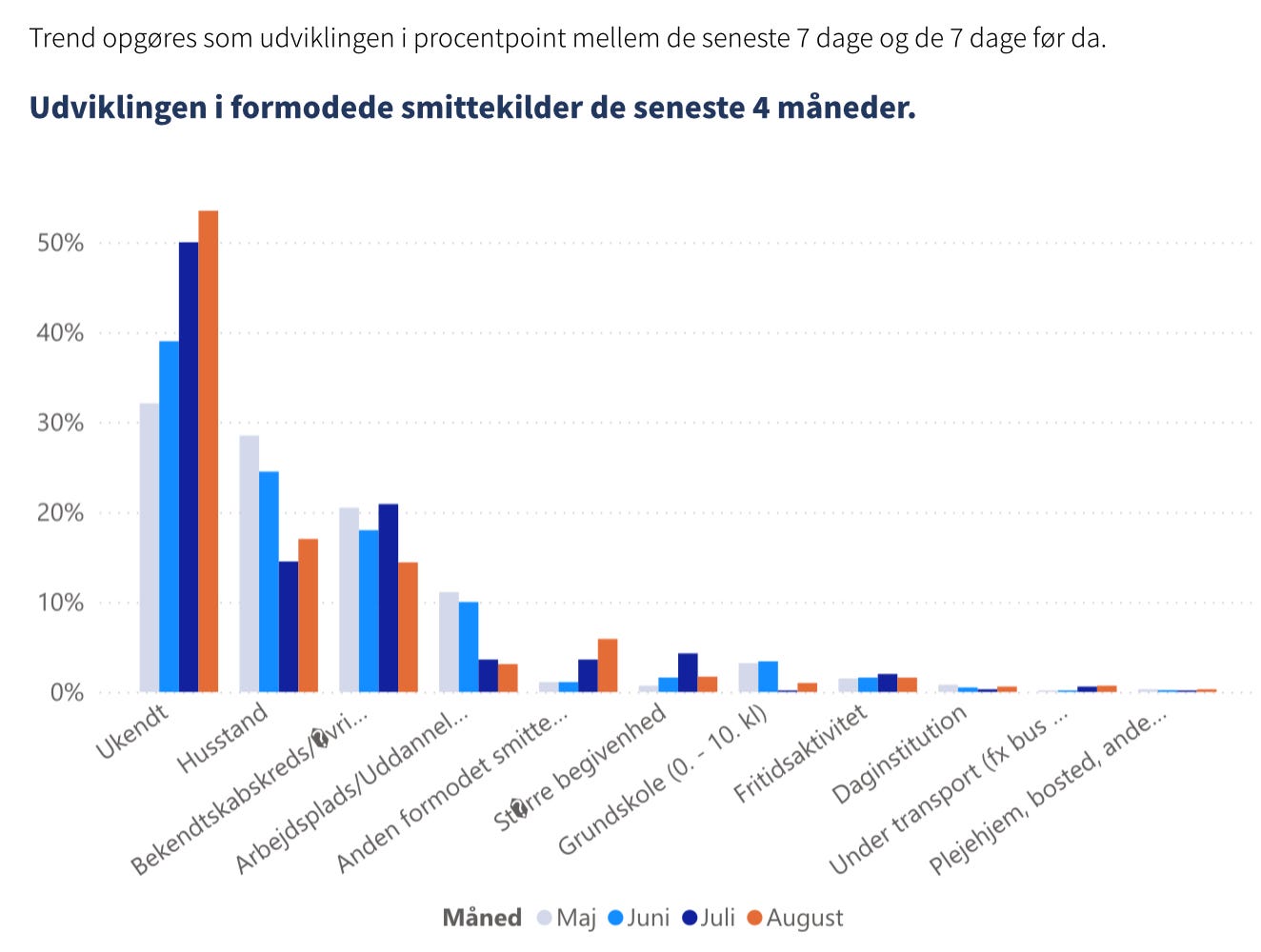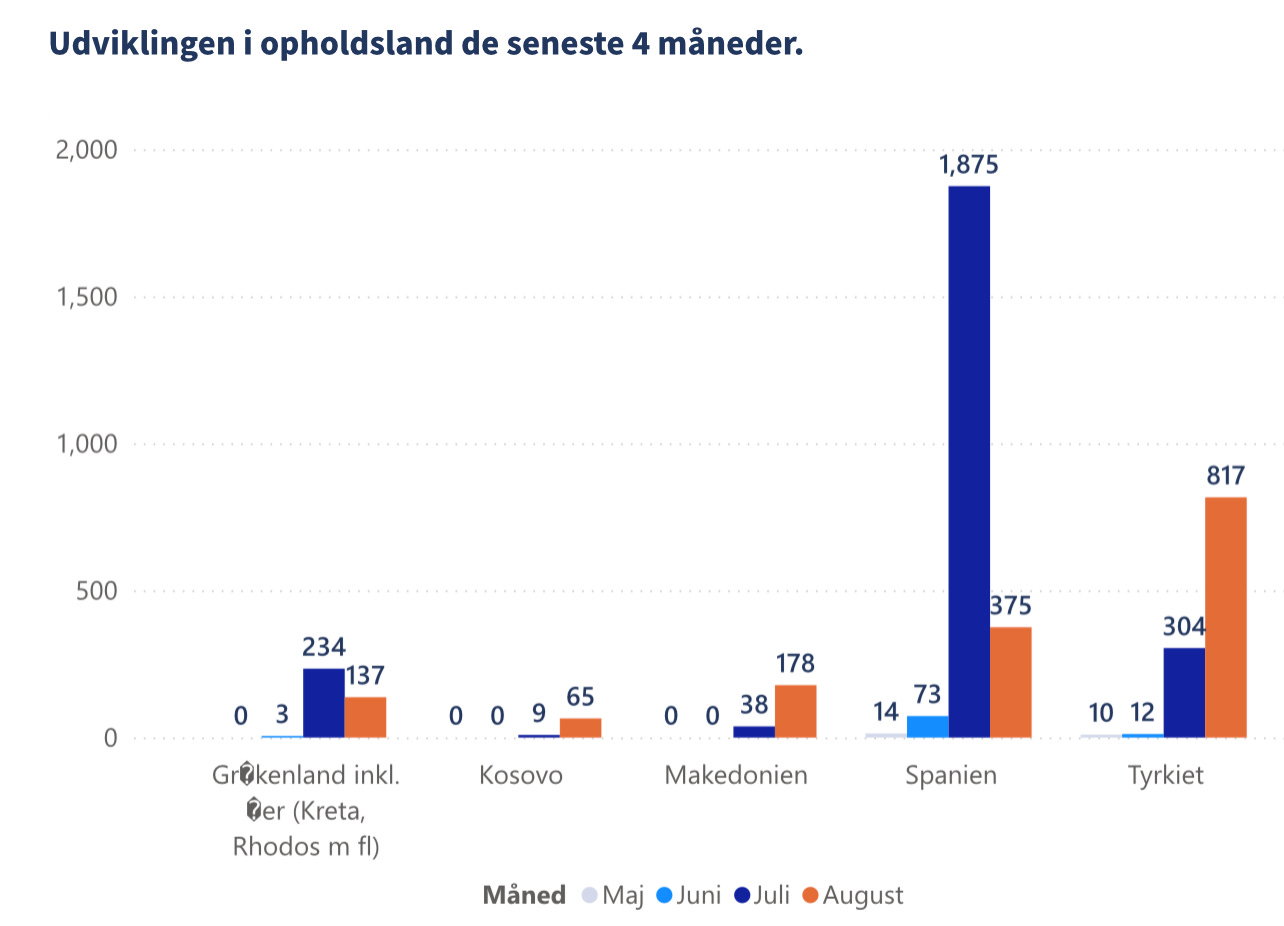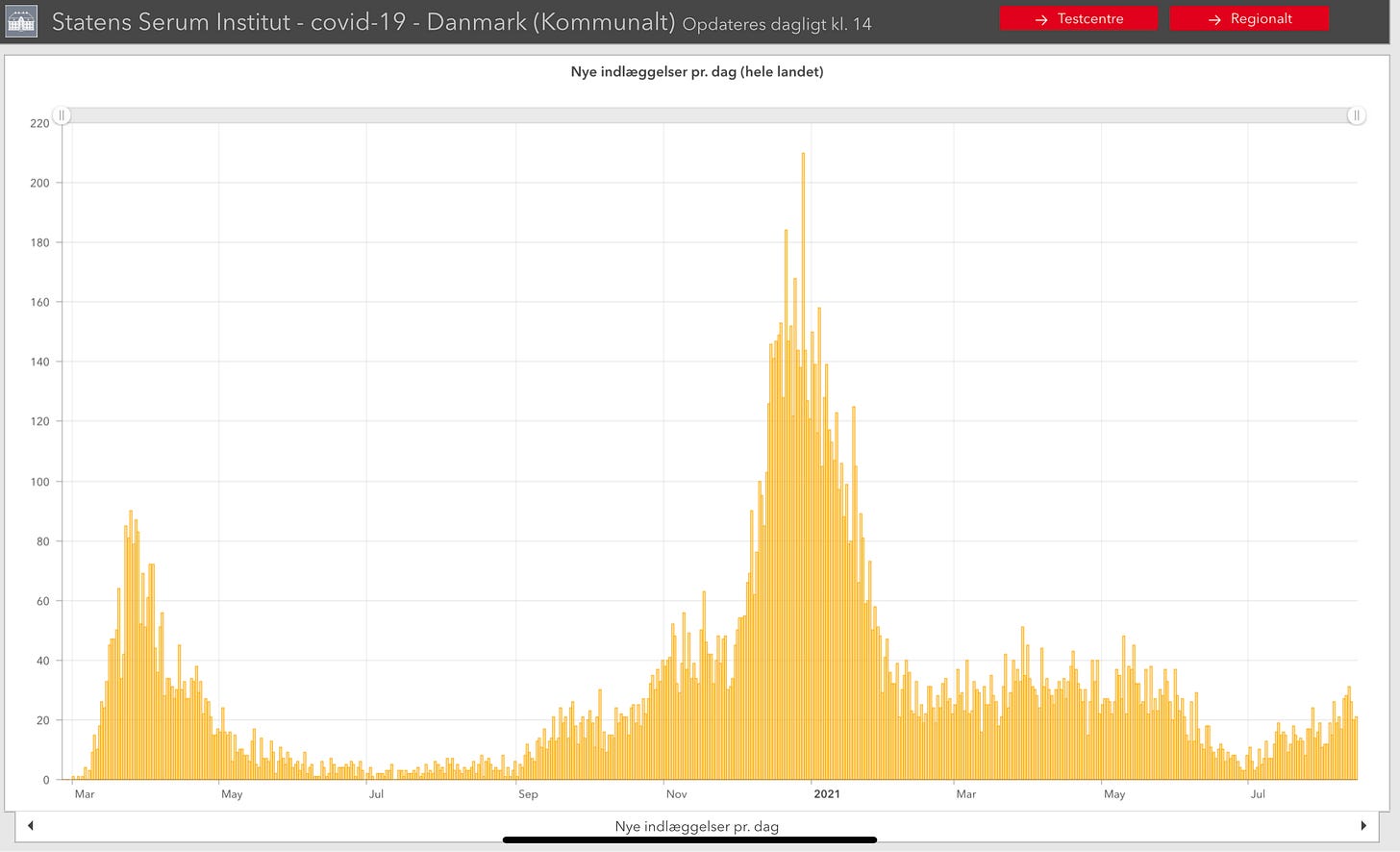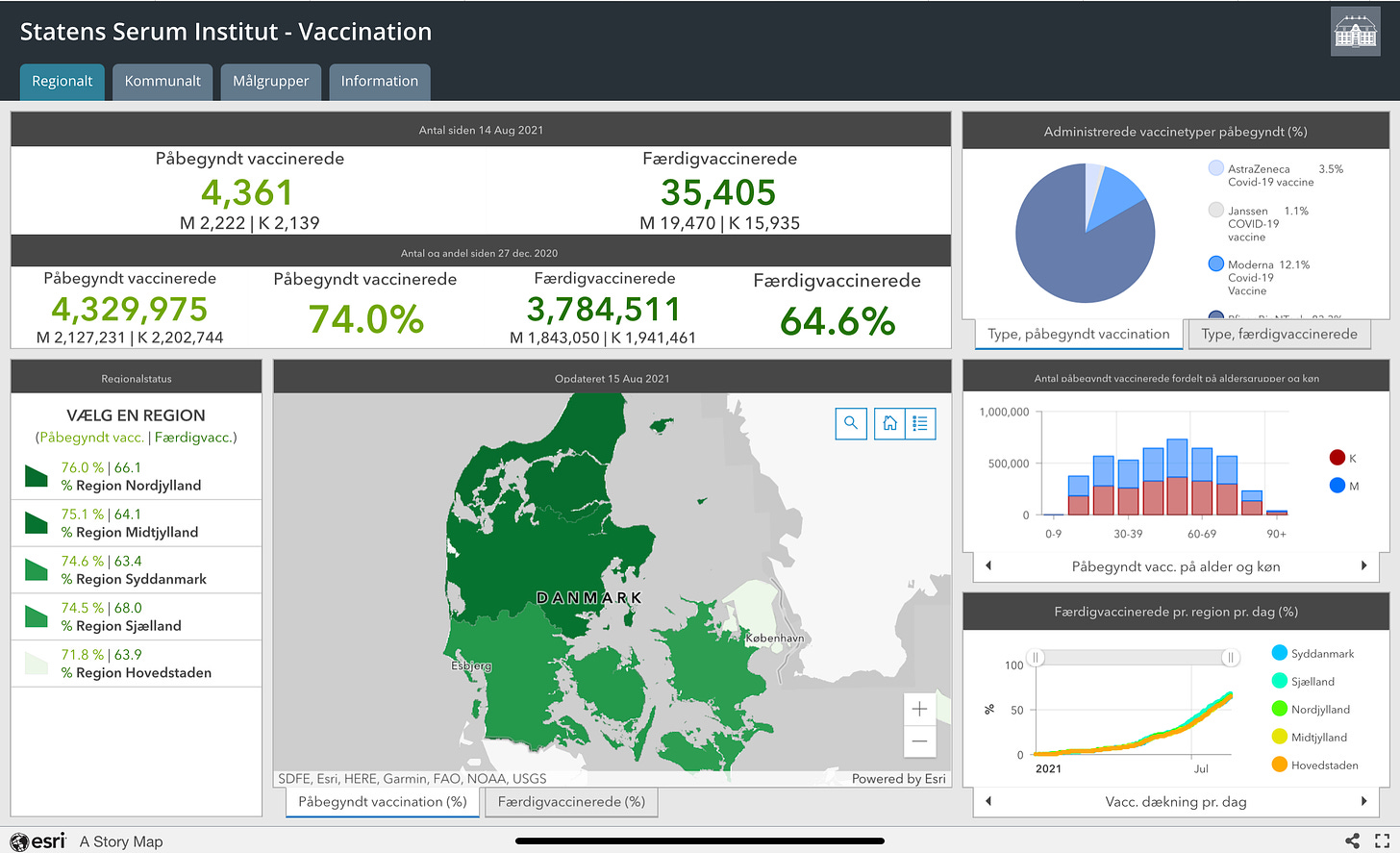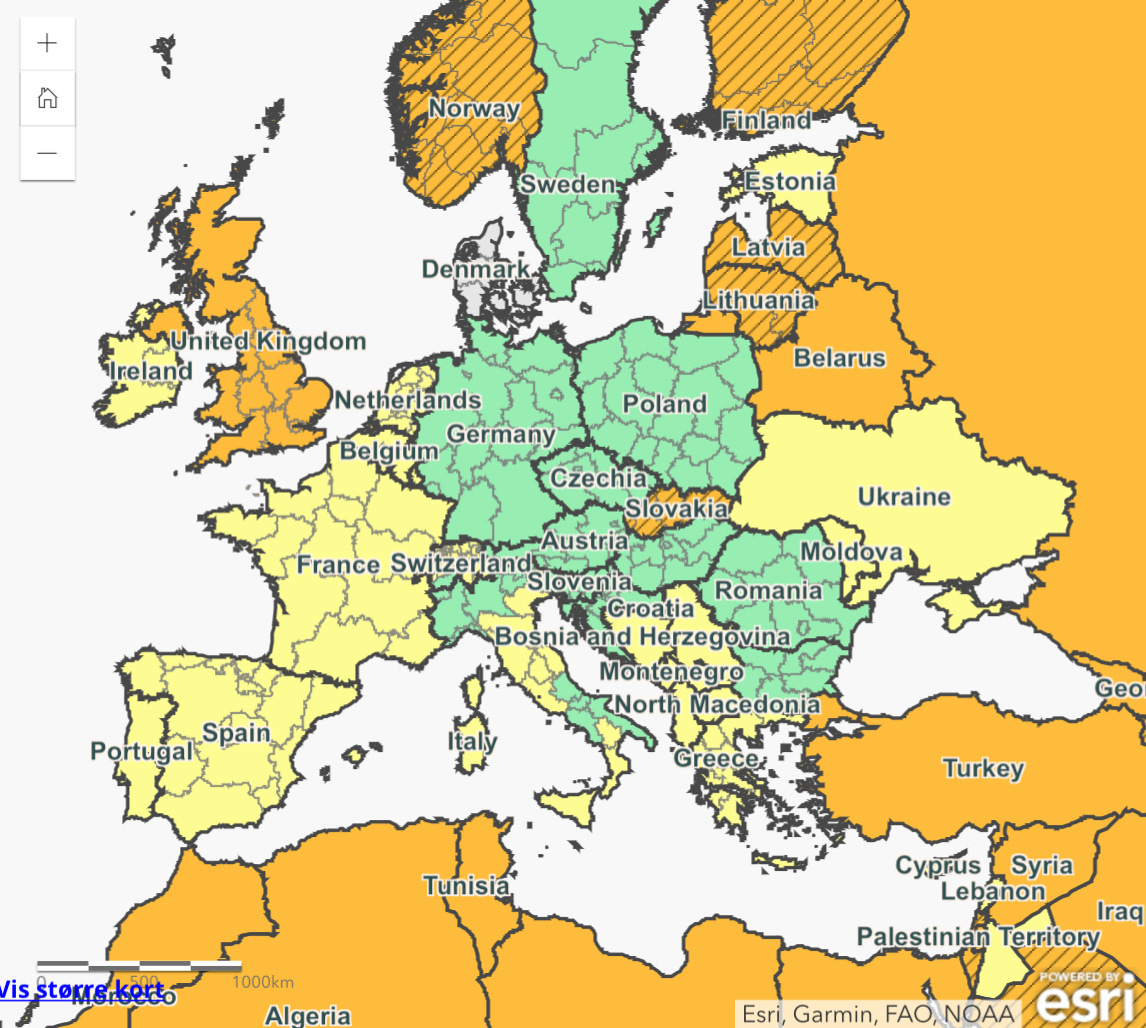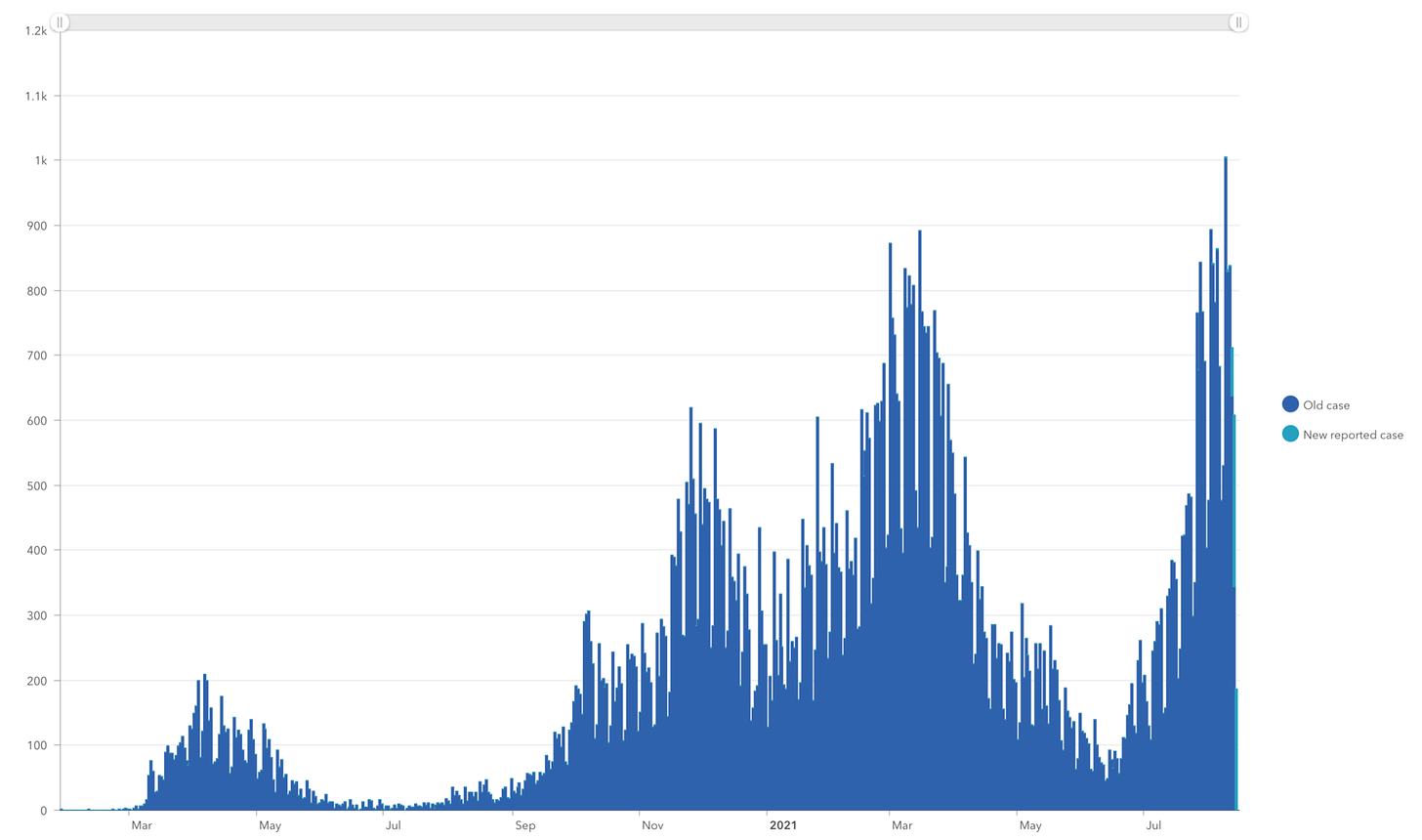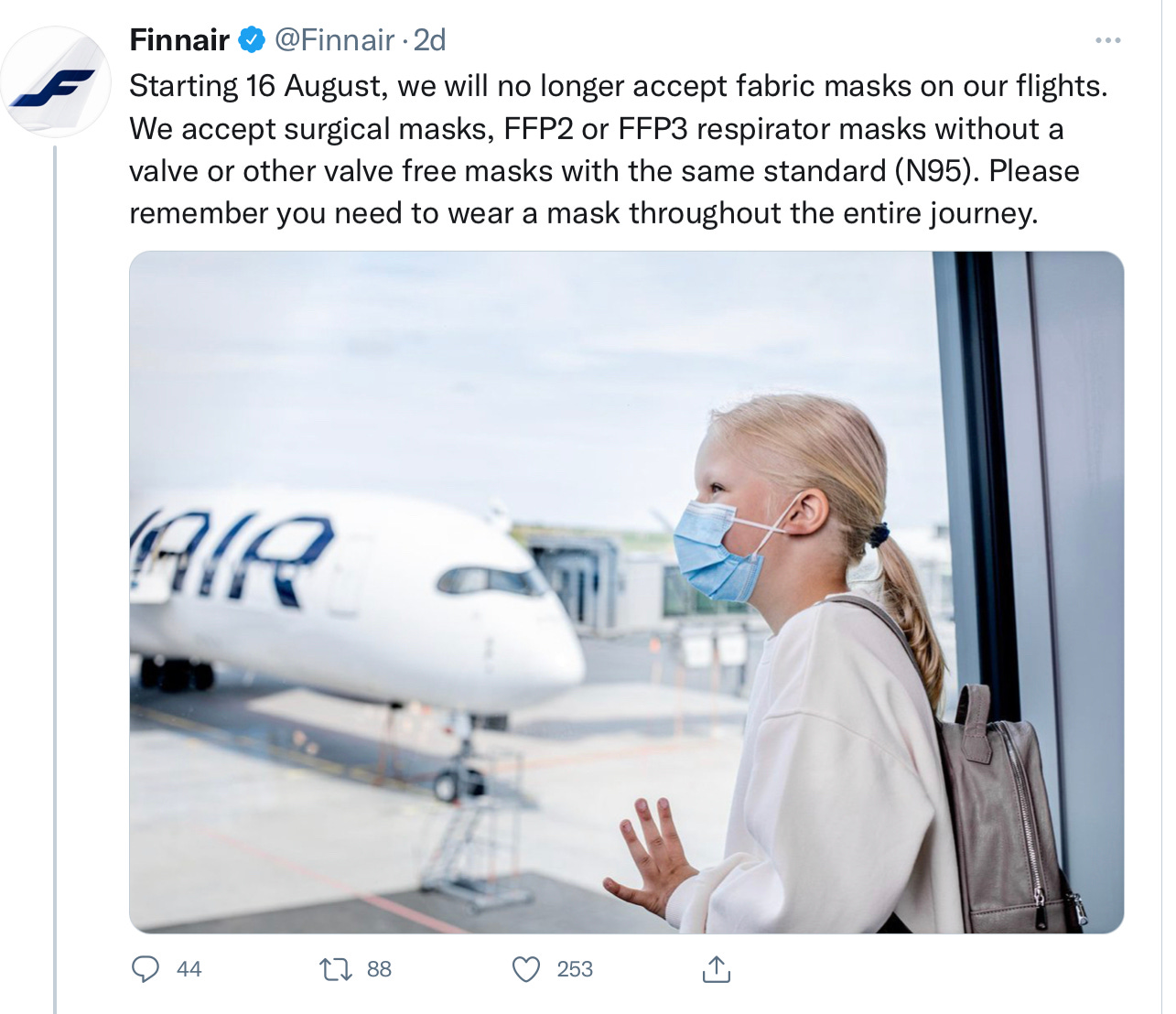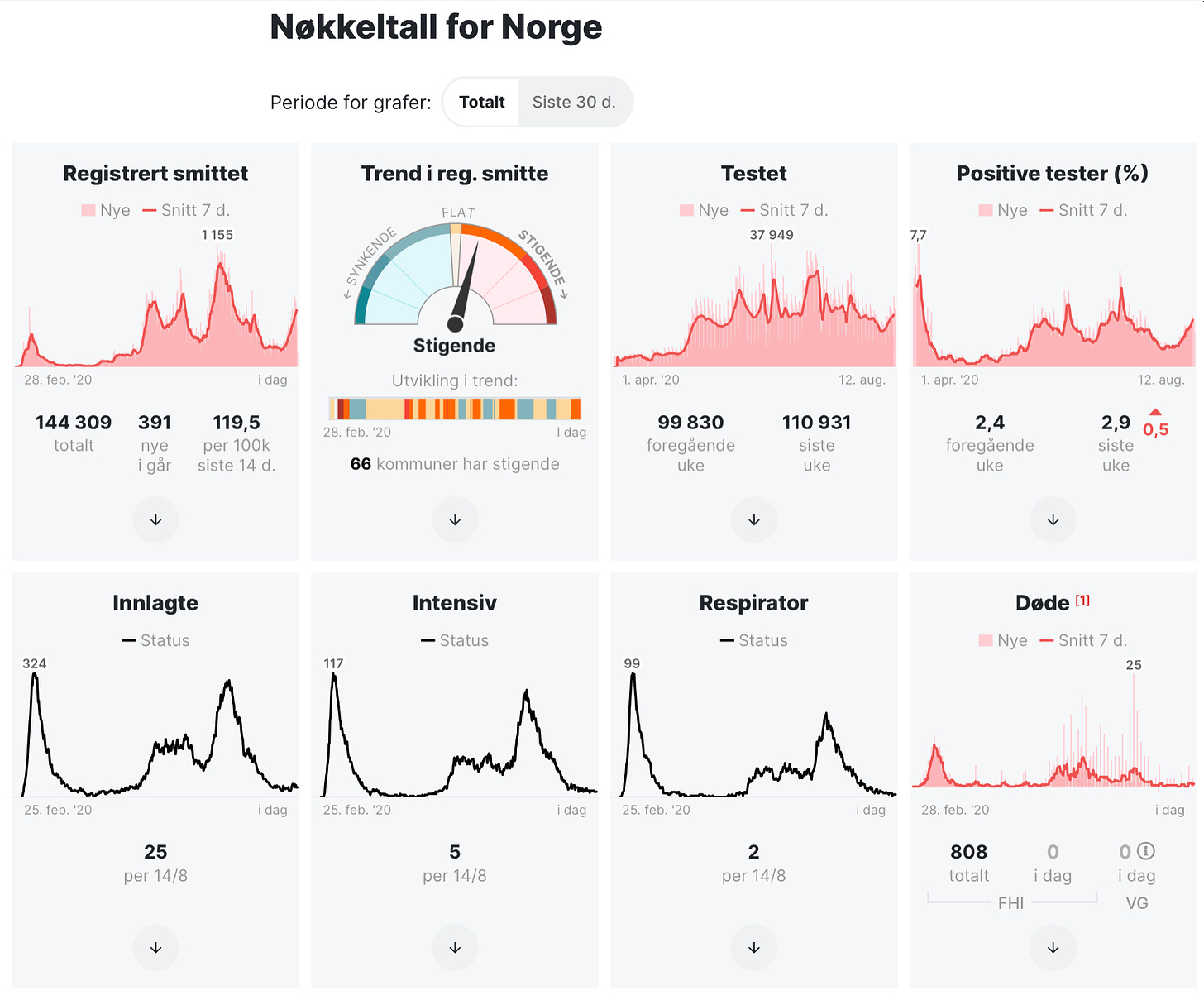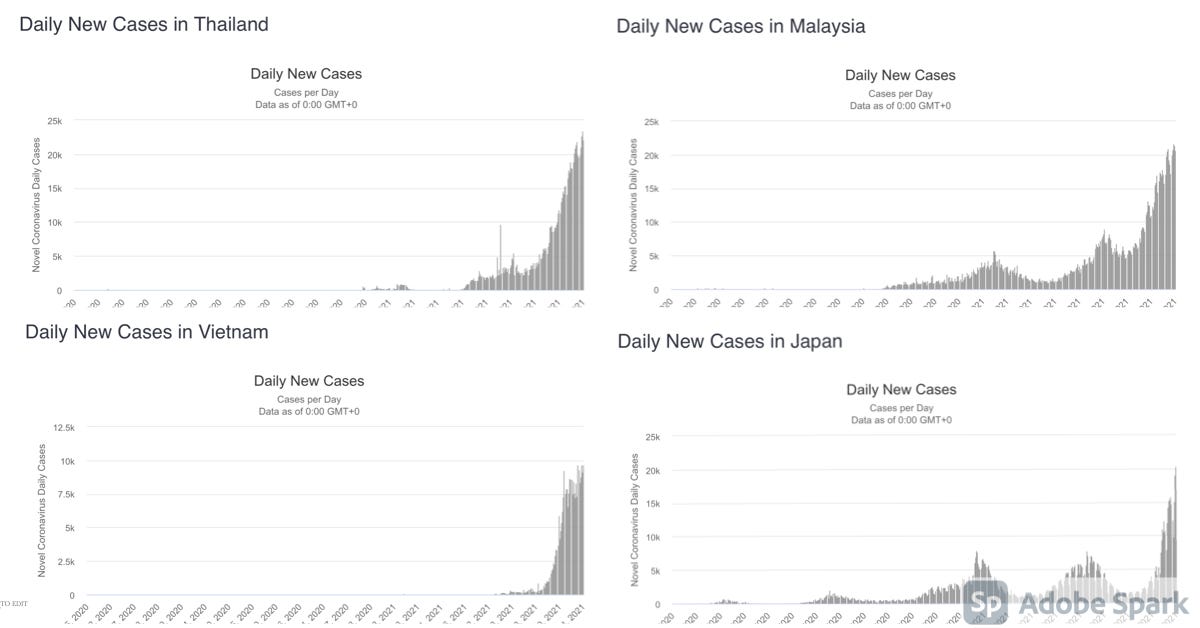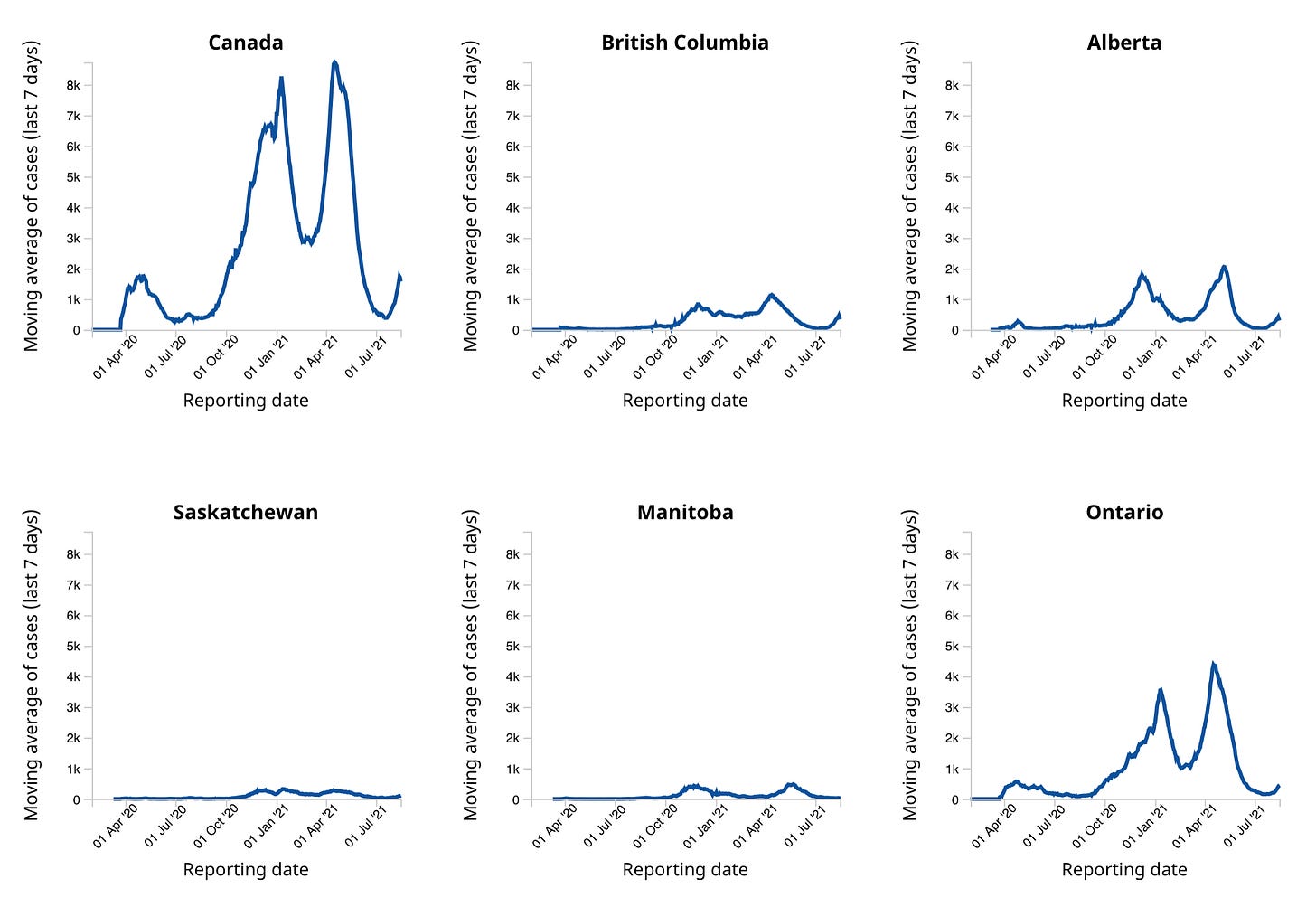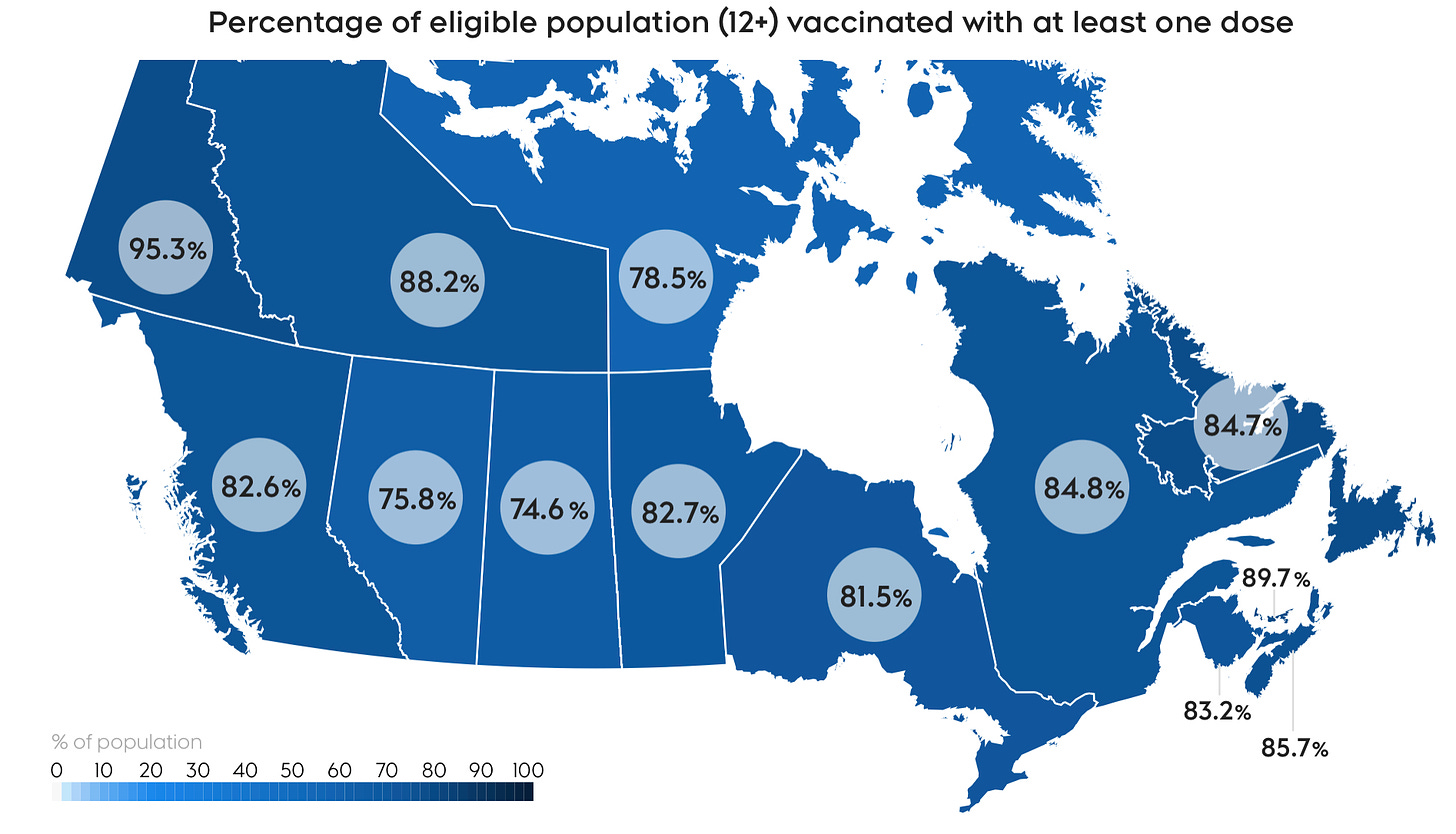🇩🇰
Denmark is about to launch a major vaccination push aimed directly at young people in schools, colleges, and universities across the country. The five health regions, the Danish National Board of Health, and Denmark’s Ministry of Health, have collectively decided extra efforts must be made to vaccinate people under the age of 30.
Region Hovedstaden says all 250 educational institutions in the capital region can expect to see vaccination outreach teams on campus “in the coming weeks.” Region Sjælland has already begun vaccination efforts on campuses for back to school last week.
Regional Council Chairman Lars Gaardhøj says its vital young people get vaccinated.
“So they just have to stand in line and get a shot in the arm if they want to be vaccinated. They have been on summer holidays and many have not booked an vaccination appointment. So this is just a way to give them helping hand. The emergency services, which are responsible for this huge task, will prioritize the efforts so that the areas where the fewest are vaccinated come first. The vaccine teams will offer vaccination to everyone students, staff, and others in the immediate area.”
The Danish National Health Board said last week that the 20 to 29 year old age group is trailing all others in vaccination rates.
-
Beginning this week, vaccination centers in Region Nordjylland are offering shots to people without an appointment between 11am and 3pm. Priority will be given to those with an appointment so there might be some line-ups for those without according to the Region.
-
Over the weekend, all remaining mask mandates were lifted on public transportation across Denmark. The change came into force on Saturday morning. The change means masks are no longer required on any bus, train, or ferry in Denmark.
Minister of Transportation Benny Engelbrecht:
“We introduced the first Danish requirements for masks in public transport, and now, after more than a year, this is also where it ends. I am full of admiration for all the carriers, employees, and citizens who, throughout the pandemic, have kept their distance and used masks so that public transportation can keep working. I have no doubt that it has helped keep the number of infections down and ultimately saved lives. Now we are in a completely different place, where a large part of the population has been vaccinated, and we are returning to a more normal everyday life. It also means that we can say goodbye to masks in buses, trains and the metro.”
The lifting of the mask mandates doesn’t apply to airlines due to international travel.
-
Denmark has added 2,805 new infections since its Thursday update. It reported 1,038 infections on Friday, making it four days in a row with daily infections over 1,000. The last time that happened was in early January. On Saturday, infections came back down slightly with 917, and then another 850 were added on Sunday.
-
There are 40 Danish kommunes with COVID incidence rates over 100 per 100,000 residents. Of those, five have incidence rate above 200 and three are in excess of 300.
-
The Danish Agency for Patient Safety, which in part is responsible for running the team of contact tracers in Denmark, says people’s homes and social circles are where a most people say they became infected.
The latest data from the agency shows that while a clear majority say they do not know where they were exposed to the coronavirus, 31.6% put the blame on other family at home or their extended circle of friends and family. This is followed by people’s place of work as the third highest infection source. Per the chart below, this has been a pretty clear trend over the last four months.
The agency says over the last seven days 21.9% of all infections in Denmark were acquired abroad. In July it was travelers coming back from Spain that were far and away of the most COVID concern, but this month that’s shifted to Turkey.
-
COVID hospitalizations (107) have jumped back upward (+13) while the number of infected people in an ICU (15) edged down (-1) and of those the number on a ventilator (9) also dipped (-2).
-
On the vaccination front to date, enough first doses have been administered to cover 74% of the total population, while 64.6% are now fully vaccinated.
On Saturday there were just 39,766 total inoculations done as the usual weekend slump arrived. Of those, there were only 4,361 first doses administered as demand continues to slide.
-
Denmark has wiped high-risk COVID red off its risk assessment map both within the European Union and for countries outside of it.
Argentina, Botswana, Colombia, Cuba, Costa Rica, Eswatiny, Fiji, Iraq, Iran, Malaysia, Mozambique, Lesotho, Libya, Zambia, Malawi, South Africa, Tunisia, Zimbabwe, Russia, Panama, and Namibia all go from high risk red to be very cautious orange.
In the United Kingdom, the regions of England, Northern Ireland, and Scotland also move from red to orange.
Within the EU Italy is now yellow while the Italian regions of Piedmont, Aosta Valley, Liguria, Lombardy, Abruzzo, Molise, Campania, Puglia, Bolzano, Trento, and Friuli-Venezia Giulia are all near-normal green.
In Switzerland the regions of Bern, Freiburg, Solothurn, Aargau, St. Gallen, Thurgau, and Zug are all graded yellow.
🇸🇪
Sweden will not update its COVID numbers until tomorrow.
-
While young people in Denmark and elsewhere are blamed for lagging behind other age groups in getting vaccinated, interest seems higher in Sweden. According to a report from TT the demand to book a vaccination appointment among the 16 to 17 year old age group has been surprisingly strong.
Public Health Agency Unit Manager Sara Byfors:
“For those between 18 and 29, the vaccination rate is over 60 percent. We think this is a good figure based on the fact that they are not in the risk group.”
Among the Swedish regions, Värmland and Uppsala have the highest vaccination rates for those aged 18 to 29 years old with over 70% having a first dose. At the other end are Jönköping with 56%, and Stockholm with just 57%.
Sweden has just begun to vaccinate those aged 16 to 17 years old.
-
According to statistics from the Swedish Public Health Agency, it’s recorded 3,486 breakthrough infections, which are COVID cases among those who are fully vaccinated. This would account for roughly 0.5% of all coronavirus cases in Sweden since it began its vaccination program. Most of the breakthrough infections have been among those 80 years old and older.
-
Sweden has signed a pre-purchase agreement with vaccine maker Novavax, securing 2.2 million doses. If approved for use in Europe by the European Medicines Agency, then Sweden is expecting Novavax doses to begin to arrive in 2022. Novavax, which has had some really encouraging results in clinical trials, is currently under a rolling review by the EMA.
🇫🇮
Finland has registered 2,226 infections since Thursday’s update. It reported 926 on Friday, 765 on Saturday, and then another 535 on Sunday.
Over the weekend, Finland passed a grim milestone with four virus deaths on Saturday and another one Sunday total to date deaths have now crossed the 1,000 mark, rising to 1,003. More than half of all pandemic deaths in Finland have been among those over the age of 80.
There are 88 COVID patients in hospital; of those, 23 of them are in an ICU, in both cases, the numbers are unchanged from Saturday.
So far, 3,851,362 1st vaccine doses (68.9% of the population) have been administered and 2,369,404 people (42.5%) now have both vaccine doses.
-
Late last week COVID restrictions were tightened in Southern Finland, specifically in Espoo, Helsinki, Kauniainen, and Vantaa. Indoor gatherings have been limited to 25 with a social distancing mandate of two meters between attendees. This will remain in place until at least September 17. The requirement means a host of activities and events will likely have to be cancelled including next week’s Helsinki Festival, which will be reduced to a few ‘COVID-proof’ offerings, according to YLE.
-
Finnish Prime Minister Sanna Marin has put goalposts on removing COVID restrictions and returning to normal life, saying they will only be lifted once 80% to 90% of all people in Finland over the age of 12 have been vaccinated.
-
As of this morning, Finnair will no longer allow passengers to wear fabric masks onboard; rather, only FFP2 or FFP3 masks or other face coverings with better filtration will be allowed.
The airline says masks must be worn at all times while on one of their airplanes and it can only be removed for short periods when eating or drinking.
🇳🇴
Since Friday, Norway has added 812 infections and had no new corona deaths.
COVID hospitalizations (25) ICU numbers (5) and the number of people on a ventilator (2) are all unchanged since Friday.
To date, 69.68% of Norwegians have had one vaccine dose and 39.96% have had both doses.
-
Norway has again postponed its stage four reopening as it braces for another infection wave driven by the Delta variant. There are a couple exceptions. As of yesterday (Sunday) social distancing requirements will be lifted for teachers and students in class. But the Norwegian Ministry of Health adds “We expect the infection to increase when this happens.”
Norway will also allow students admitted to PhD programs in Norwegian universities to enter the country, albeit with testing and quarantine requirements.
Other than that, all other restrictions remain in place with the phase four reopening postponed “until all adults have been vaccinated.”
-
Norway’s Health Ministry is planning on sticking to its planned return to normal in the fall. It says that very high vaccine uptake in Norway will help keep outbreaks under control and provide a buffer to protect the health system from a crush of COVID patients.
“The vaccines will help us keep the pandemic under control. They provide good protection but not 100 percent protection. We must live on with this virus, as we live with other infectious diseases. It is not possible to remove the risk completely, as we cannot with other diseases. Unfortunately, this means that some will become seriously ill and that some will die of COViD after we have finished the vaccination and society has reopened. We will not maintain domestic restrictions to reduce this risk. Good health is about more than protection against disease. It is also about freedom to live the life you want.”
-
Students are returning to class in Norway this morning and the Norwegian Institute for Public Health says schools will run “almost as usual.” The health agency says most schools and kindergartens will be operating under the ‘green light’ level in Norway’s three-tiered traffic light COVID risk assessment system.
Chief Physician Margrethe Greve-Isdahl:
“It is important that children and young people get to be at school as much as possible. The goal is for them to now have an almost normal everyday life. Even though we expect some infection among children and young people in the future, we know that these very rarely become seriously ill. We expect less infection among children. We anticipate more infection among adolescents and young adults. However they are most often infected in social situations, and not at school.”
Schools must still abide by a basic level of infection control and hygiene guidelines for both staff and students. Hands must be washed frequently. Etiquette on coughing and sneezing into an elbow will be emphasized. Anyone with symptoms is to stay home.
Norway has made vaccinating teachers and school staff a major priority in the last month or so in preparation for back-to-school.
-
Norway has agreed to buy more than a million vaccine doses from Poland. The extra doses will speed up Norway’s vaccination program by two to three weeks, according to the health ministry. This means it expects the majority of the adult population to have been offered a vaccination opportunity “within two to four weeks.”
A decision whether to vaccinate 16-and 17-year-olds will now be made this month instead of next according to Norway’s Health Ministry. It sounds like the decision will be a yes, as the ministry has already asked the regions to prepare to begin vaccinating the teens “in a few weeks.”
The Norwegian Institute for Public Health is also considering whether to vaccinate adolescents as young as 12 years old. But it sounds like they are going to take their time with that decision saying high vaccine uptake “means that we have time to make a thorough assessment based on the most up-to-date knowledge possible.” It also adds the decision needs to be made “in such a way that it provides confidence and security for the children and their parents.”
🇦🇺
Australia has also snapped up a million doses of Pfizer/BioNTech vaccine from Poland, who seems to be offloading its vaccine supply. The doses were expected to begin arriving down under as of yesterday. Australia is looking to put the pedal to the metal in its lackluster vaccination campaign as the Delta variant hammers the country. The doses acquired from Poland will be targeted at young people 20 to 39 years old in some of the more vulnerable areas of Sydney.
Sydney has been under a strict lockdown since June 23.
-
The Australian state of New South Wales continues to grapple with the Delta variant-driven infection wave, recording record-high infection numbers going into the weekend. Yesterday police in New South Wales launched a “stay at home” campaign with hundreds of officers patrolling the streets to make sure people are abiding by stay-at-home orders. The state has also cranked up fines for people caught flouting the lockdown rules to 5,000 Australian dollars.
🌏🦠
Elsewhere in the world, the Delta variant-driven infection wave is pushing COVID cases up to the highest daily numbers seen yet in the pandemic in countries like Thailand, Malaysia, Vietnam, and Japan.
🇨🇦
With over five-million people in Canada over the age of 12 still not having been vaccinated and the rate of first doses administered falling, the federal government drew a line on Friday. Transport Minister Omar Alghabra announced that the federal government will require all public servants to be fully vaccinated. The mandate extends to crown corporations and other federally regulated businesses as well.
-
Canada has inked a deal with Moderna to secure a lot more vaccine doses for 2022, 2023, and an option to extend to 2024. The contract guarantees access to 40 million doses of the Moderna vaccine, with contract options on an additional 65 million more doses.
-
Canada has reported 977 more infections and had no coronavirus deaths in its Sunday update. In both cases those numbers will be adjusted tomorrow, as will Saturday’s, when provinces like British Columbia, who do not report on weekends, table three days worth of infection date later today.
The Canadian vaccination campaign has so far administered 27,378,159 1st vaccine doses (71.91% of the total population) while 24,002,169 people (63.04%) are fully vaccinated.
Ontario added 1,089 new infections over the weekend, with over 500 new COVID cases on both Saturday and Sunday. According to Health Minister Christine Elliott, there are 98 people hospitalized as of Sunday afternoon, with 116 more in an ICU.




